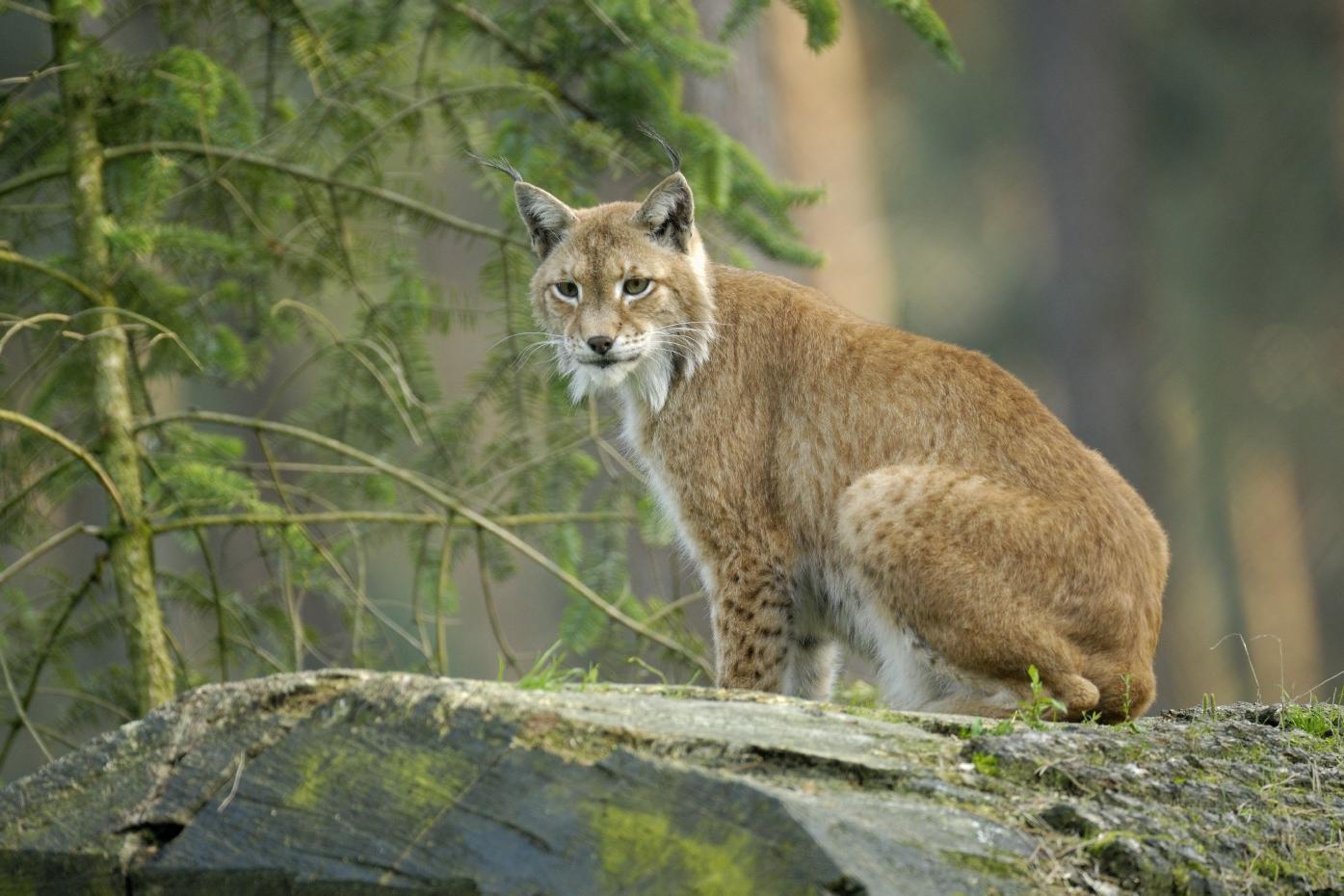
Where do lynx live?


The lynx' favourite habitat: unspoilt, unfragmented forests (like this one in Romania's Carpathian Mountains) are where the lynx feels at home.
© Matthias Schickhofer/EuroNaturThe Eurasian lynx has a very large range which extends from Western Europe to Central Asia. Its original range has shrunk considerably over the course of the last few centuries however, and in Central Europe only remnant populations have survived persecution by humans. Large populations still exist in the Baltic countries and in Scandinavia as well as is the Carpathian Mountains.
The Balkan lynx (Lynx lynx balcanicus) is a rare sub-species of the Eurasian lynx. It is thought that fewer than 50 individuals now remain. As such, the Balkan lynx is one of the rarest cats on earth. Its range is confined to the south west of the Balkans. However, habitat destruction and direct persecution - including of its prey - are making life very difficult for the Balkan lynx there.
The lynx's habitat consists of large areas of forest which provide it with sufficient cover for hunting as well as a large supply of prey. However, lynx are also able to find their way around our cultivated landscape and will sometimes hunt at the forest edge where it adjoins meadows and fields. The cats are solitary animals whose very large territories can cover up to several hundred square kilometres. Unlike wolves, lynx are not inclined to migrate to new territories. Only the males will occasionally undertake longer migrations. Unfragmented landscapes and an abundance of food are therefore essential requirements for the lynx’s survival.
Lynx characteristics
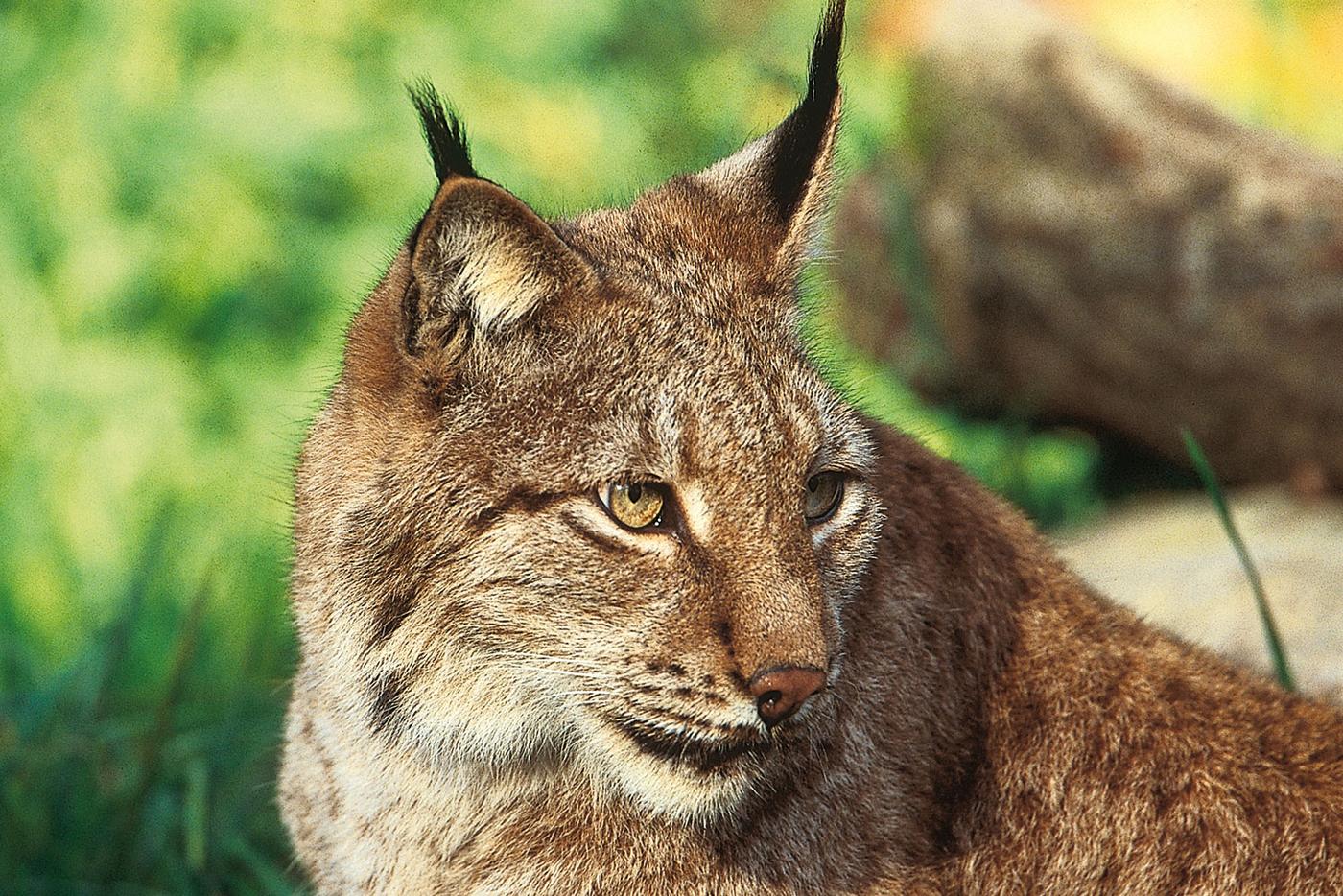
The lynx' characteristic "paintbrush ears" give it its German nickname Pinselohr.
© Wolf SteigerLynx are medium-sized predatory cats with a body length of 80 to 120 centimetres and a shoulder height of 50 to 70 centimetres. They can reach a weight of 15 to 25 kilos. The long tufts of hair on the tips of its ears are a particular characteristic of the lynx. These tufts can be up to 5 centimetres long and are the reason why the animal is sometimes also called “Brush Ears”. Equally striking are the lynx’s distinctive whiskers, which work rather like a sound amplifier.
Lynx have a yellow to reddish-brown coat with black spots. This mottled patterning is unique to each lynx and allows researchers studying the animals to tell them apart. The fur on its chin and abdomen is creamy white in colour. The typical rounded paw print of an adult lynx is around three times bigger than that of a domestic cat, measuring 6 to 9 centimetres in diameter.
In captivity, lynx can live for more than 20 years. In the wild however, they usually reach only a third of that age.
What do lynx eat?
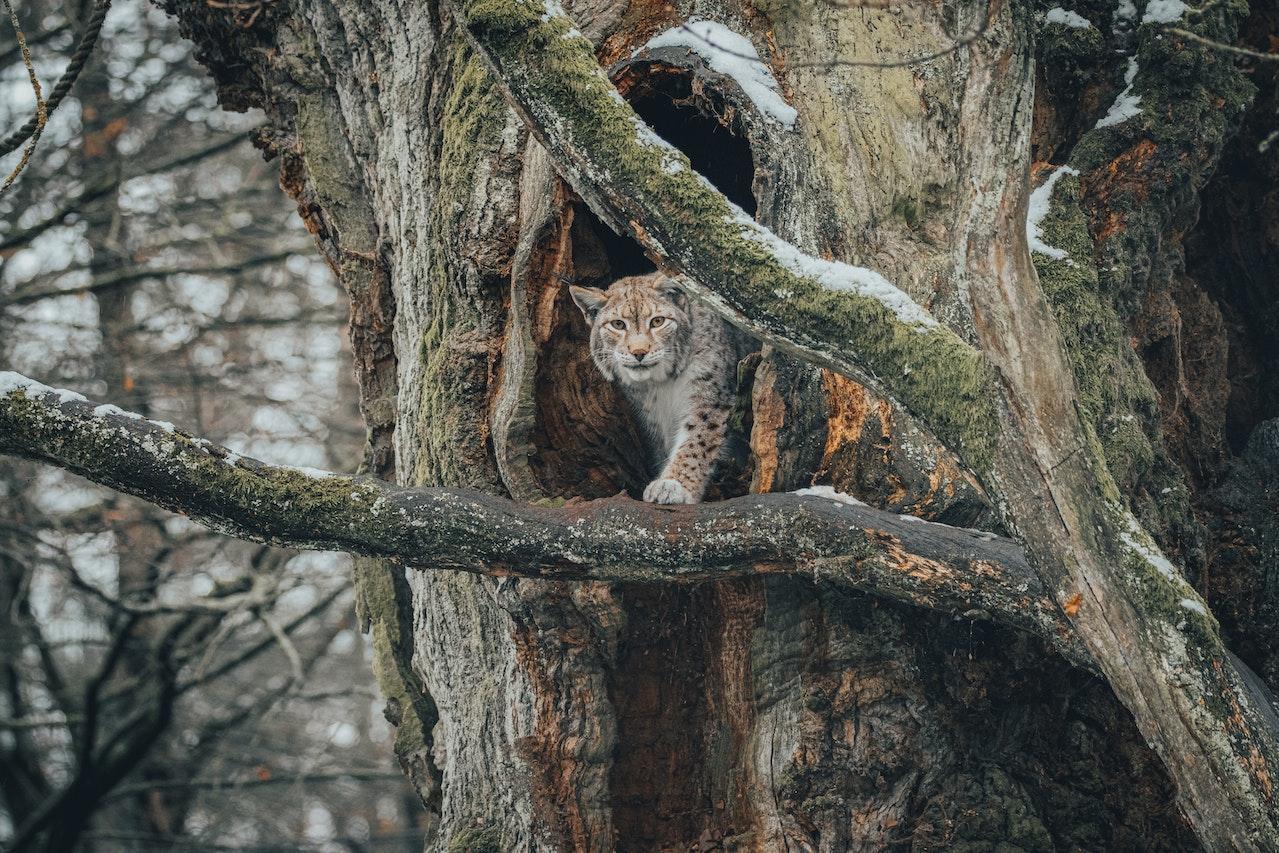
The lynx' keen senses help it to hunt.
© David Selbert; Pexels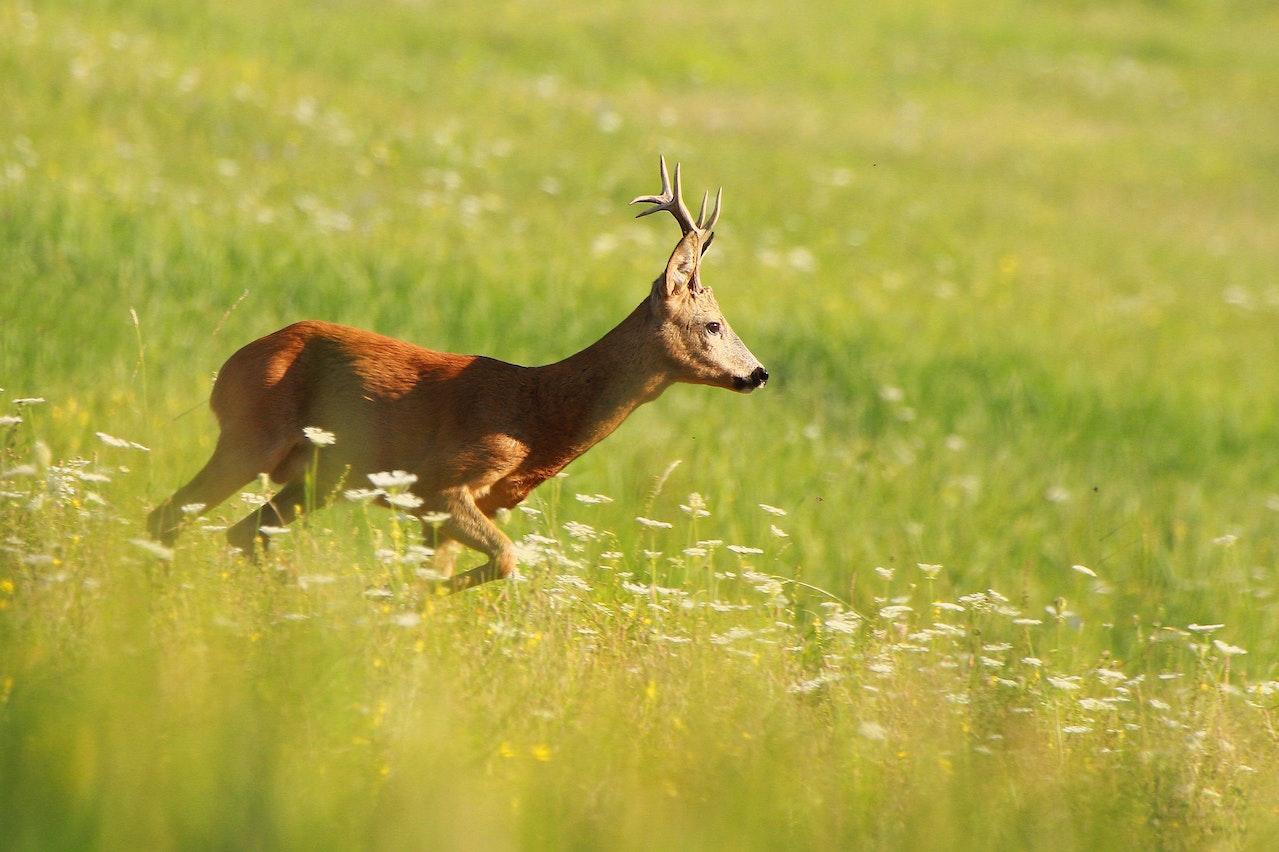
In central Europe, the majority of the lynx' diet comes from roe deer. They prey mainly on old, sick or weak animals.
© Filip Nasaly; PexelsThe lynx is a pure carnivore. Yet, the animal is far from choosy about what it eats. Depending on region and availability of prey, the lynx hunts cloven-hoofed animals such as roe deer, chamois and mouflon, as well as young red deer and reindeer. Small mammals such as hares and rabbits and, in rare instances, smaller predators such as foxes are also on the lynx's menu. The lynx hunts mainly in the evening, when its prey are also active.
When hunting, the lynx is aided by its excellent sensory organs. It can see six times better in the dark than a human can and is able to spot a rabbit from a distance of 300 metres. With its finely tuned ears, it can also hear the slightest rustle. The lynx is a stalk-and-ambush hunter which catches its prey just like a cat does. If a surprise attack fails however, the prey is not pursued.
The lynx seizes its prey with its front claws and kills it with a purposeful bite to the throat. If it has killed a deer or a chamois and is not disturbed, the lynx will return to its prey for several nights until it has completely consumed it. Only the larger bones, head, fur and intestines remain. A lynx needs to kill about one deer or chamois per week, which equates to around 60 animals per year.
Reproduction and social behaviour of lynx
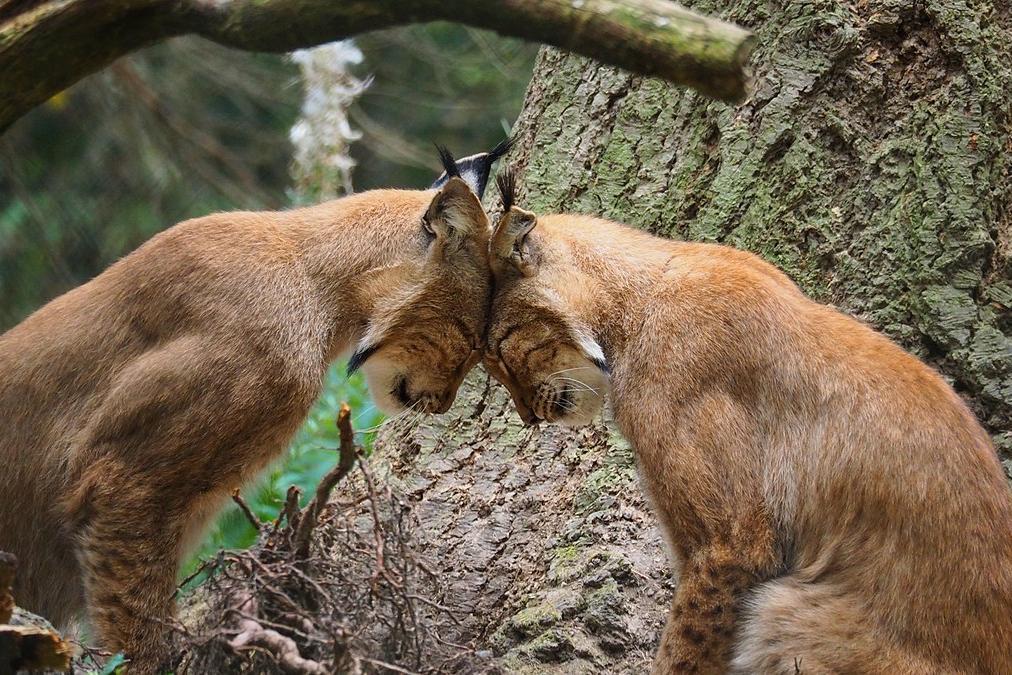
A very rare sight for lynx as, outside the breeding season, they are dedicated loners.
© Raischmi; Wikimedia CommonsThe months of February and March are mating season (rutting season) for lynx. During this time, the lynx’s loud mating calls can sometimes be heard from far away; they sound similar to the barking of foxes and deer. Outside of this period, males and females stay well away from each other.
Between the end of May and mid-June, after a gestation period of about 70 days, the female gives birth to her young in a sheltered place. A litter consists of one to four cubs which the female rears alone. They are suckled for four and a half to six months before being gradually introduced to eating prey by the adult. After nine to ten months the young lynx are able to hunt for themselves. They stay with their mother until the following spring, when they then seek out their own territories.
Are lynx endangered?

Green bridges like this one in Estonia are essential for the survival of the lynx, enabling it to conquer new areas therefore avoiding loss of genetic diversity.
© Sillerkiil; Wikimedia Commons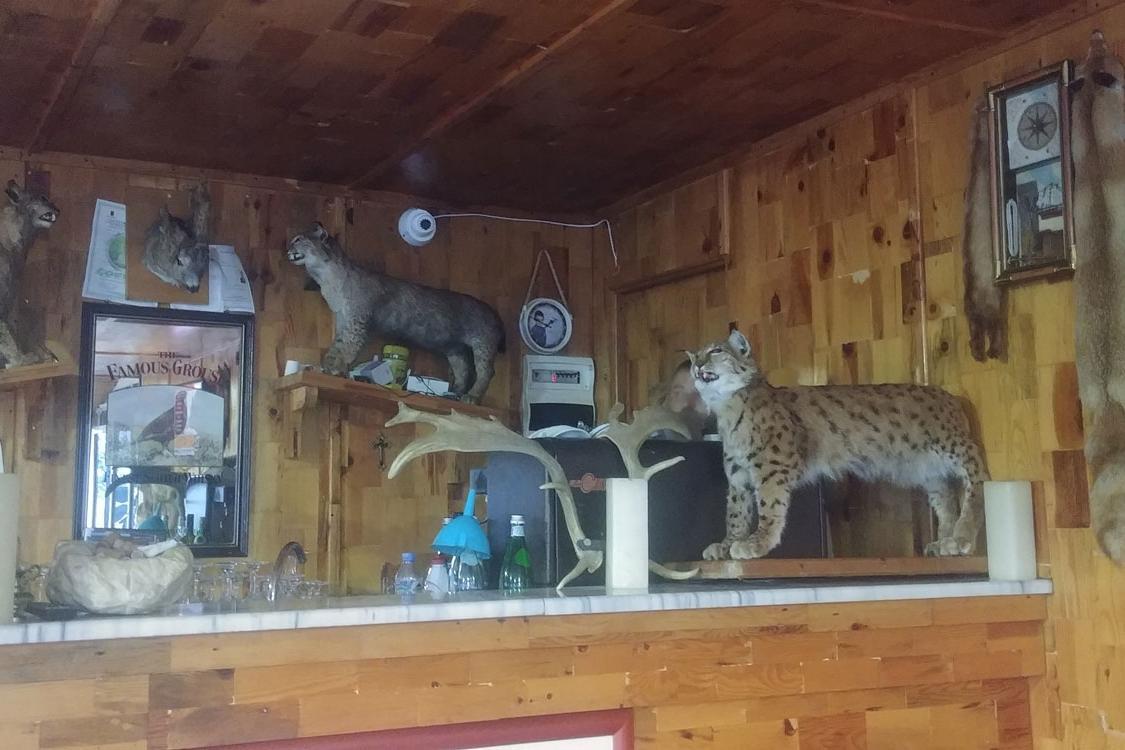
The lynx frequently falls victim to poachers in Germany, as it does elsewhere. The situation is particularly extreme for the Balkan lynx. Sometimes in Albania, the animals are stuffed after being shot and then displayed in restaurants.
© PPNEAHumans pose the greatest threat to “Brush Ears”, endangering the lynx both through direct persecution and through the destruction of its habitat. Having been driven to extinction in large parts of Europe since the beginning of the 19th century, lynx began to be reintroduced in several countries from 1970 onwards.
In Germany, breeding populations of lynx currently only exist in the Harz Mountains, the Bavarian Forest and the Palatinate Forest. In other parts of Germany, there have been frequent sightings of individual animals and some have established themselves territorially, as is the case at Lake Constance. These animals are mostly young males in search of a mate. In most parts of Germany, the species, which has little inclination to migrate, is not expected to return of its own accord. Without the support of people, the lynx will not be able to reclaim Germany as a habitat in the long term.
The Balkan lynx population is now believed to number fewer than 50 individuals. This sub-species of the Eurasian lynx is therefore the most endangered lynx population on our continent.
In Europe, the lynx is protected by the Washington Convention on International Trade in Endangered Species of Wild Fauna and Flora, the Bern Convention and the EU Directive on the Conservation of Natural Habitats and of Wild Fauna and Flora.
Nevertheless, individual lynx continue to be illegally shot. Sheep farmers in particular are worried about their animals and hunters fear for the game population in their areas. In some regions of the Balkans, hunted lynx are a much-coveted trophy.


